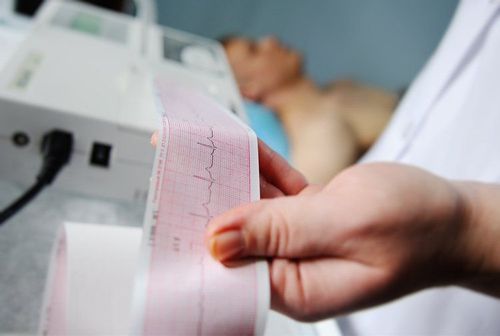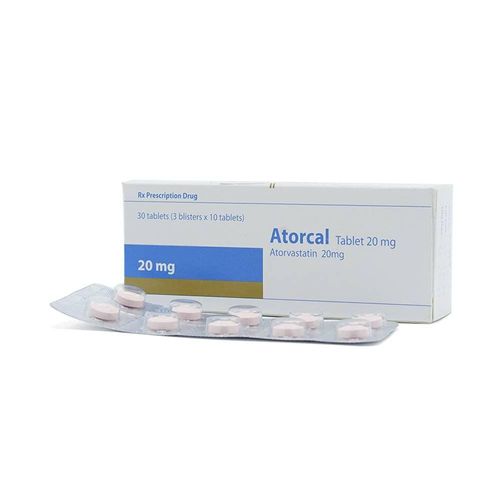This is an automatically translated article.
The article is made by Cardiologist - Department of Examination & Internal Medicine - Vinmec Phu Quoc International General Hospital.
Coronary heart disease is a dangerous disease that can lead to death. If the disease is detected late and is not properly treated, it can lead to extremely dangerous complications for the heart.
1. Chronic coronary artery disease
Ischemic heart disease also known as coronary artery disease, is the term associated with insufficient blood supply to the heart muscle due to narrowed or blocked coronary arteries, usually due to atherosclerosis. There are two types of coronary artery disease: chronic (stable) and acute (unstable) coronary artery disease.
Most patients have chronic coronary syndrome, also known as stable ischemic heart disease. Diagnosis is based on a typical history of angina in the presence of atherosclerotic cardiovascular disease risk factors: men, postmenopausal women, hypertension, diabetes mellitus, dyslipidemia Angina is chest discomfort that occurs when the blood supply is not enough to meet the heart muscle's oxygen needs. Stable angina occurs with exertion to a certain extent, each time exertion to that extent, chest pain will occur, the patient's pain will decrease or disappear when exercise is stopped or nitroglycerin medication.
Other stable coronary artery disease patients without typical angina symptoms. Symptoms related to decreased blood flow to the heart such as fatigue, dyspnea on exertion, or silent ischemia (especially in patients with diabetes). In these patients, the diagnosis can be confirmed by exercise testing or, if unclear, by invasive evaluation such as coronary angiography.

Người bệnh mạch vành mạn có thể xuất hiện khó thở khi gắng sức
The main goals in the care of patients with chronic coronary heart disease are accurate diagnosis, assessment of severity, symptomatic relief, and prevention of future cardiovascular events such as acute coronary syndromes, death. death.
Most patients with CHD will be diagnosed by exercise testing (echocardiogram, electrocardiogram) or imaging (computed tomography coronary angiography to diagnose or assess the level of blood pressure). disease severity).
● Patients with severe symptoms of angina despite optimal medical therapy or who are likely to have severe ischemic heart disease based on exercise testing should undergo coronary angiography with coronary intervention.
● Beta-blockers are preferred for initial treatment and prevention of symptoms of angina. Calcium channel blockers and long-acting nitrates are alternatives if beta blockers are contraindicated or cause side effects; They can also be added as a combination therapy if monotherapy is unsuccessful. Short-acting nitrates are used for immediate angina relief.
● Therapies known to reduce the incidence of adverse cardiovascular events such as death and myocardial infarction should be initiated. These include antiplatelet (aspirin), lipid lowering, smoking cessation, appropriate blood pressure and weight loss control, and optimal control of diabetes. Regular exercise and stress reduction are also recommended.
● Optimal management of these patients also requires periodic evaluation (every 6 to 12 months) of the patient's clinical symptoms, medical history, physical examination, and electrocardiogram (ECG) measurements. .

Bệnh mạch vành mạn được theo dõi qua kỹ thuật ECG
2. Typical angina pectoris
Location: Usually behind the sternum and as an area (rather than a point), pain may radiate to the neck, shoulder, lower jaw, epigastrium, back, left hand. More commonly, it spreads to the left shoulder and then to the inside of the left hand, sometimes down to the little and ring fingers. Circumstances of occurrence: Usually appear when exertion, strong emotions, cold, after a lot of meals, when lying down. Characteristic: Most patients describe angina as constricting, constricting, or pressing on the chest and sometimes a chilling sensation. Some patients have dyspnea, fatigue, headache, nausea, and sweating. Pain: Usually lasts a few minutes (3 to 5 minutes), can be longer but usually not more than 20 minutes (if the pain is longer and occurs at rest, consider ACS). Attacks that are caused by emotions are usually longer lasting than those caused by exertion. Pain that lasts less than 1 minute should be thought of as a cause other than the heart.
There are many causes of angina such as heart, lung, digestive, muscular and neurological. Therefore, it is necessary to determine whether this angina is caused by coronary artery disease or not, we rely on the following 3 factors:
Poststernal block angina with typical nature and duration. Occurs with exertion or emotion. Pain relief with rest or with nitrates; Typical angina (coronary artery pattern) consists of 3 factors above.
Less typical angina: Only 2 factors above.
Not angina/nonspecific angina: Only 1 or none.

Vị trí xuất hiện cơn đau thắt ngực điển hình trong bệnh lý mạch vành
At Vinmec International General Hospital, currently implementing a coronary examination package that provides patients with the benefits of examination, testing, ultrasound, X-ray... the doctor will base on the results and give give advice or scientific treatment protocol.
Customers wishing to be examined at Vinmec International General Hospital can register for examination at the nationwide system HERE.
Please dial HOTLINE for more information or register for an appointment HERE. Download MyVinmec app to make appointments faster and to manage your bookings easily.













